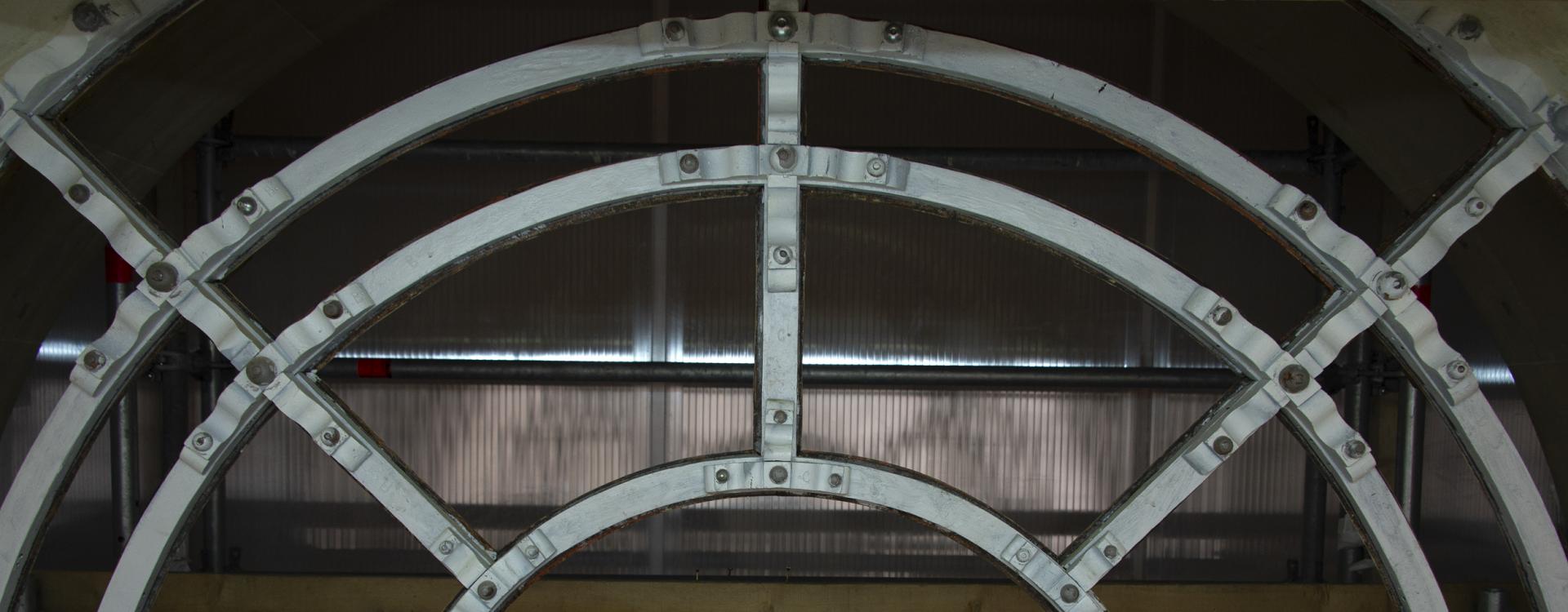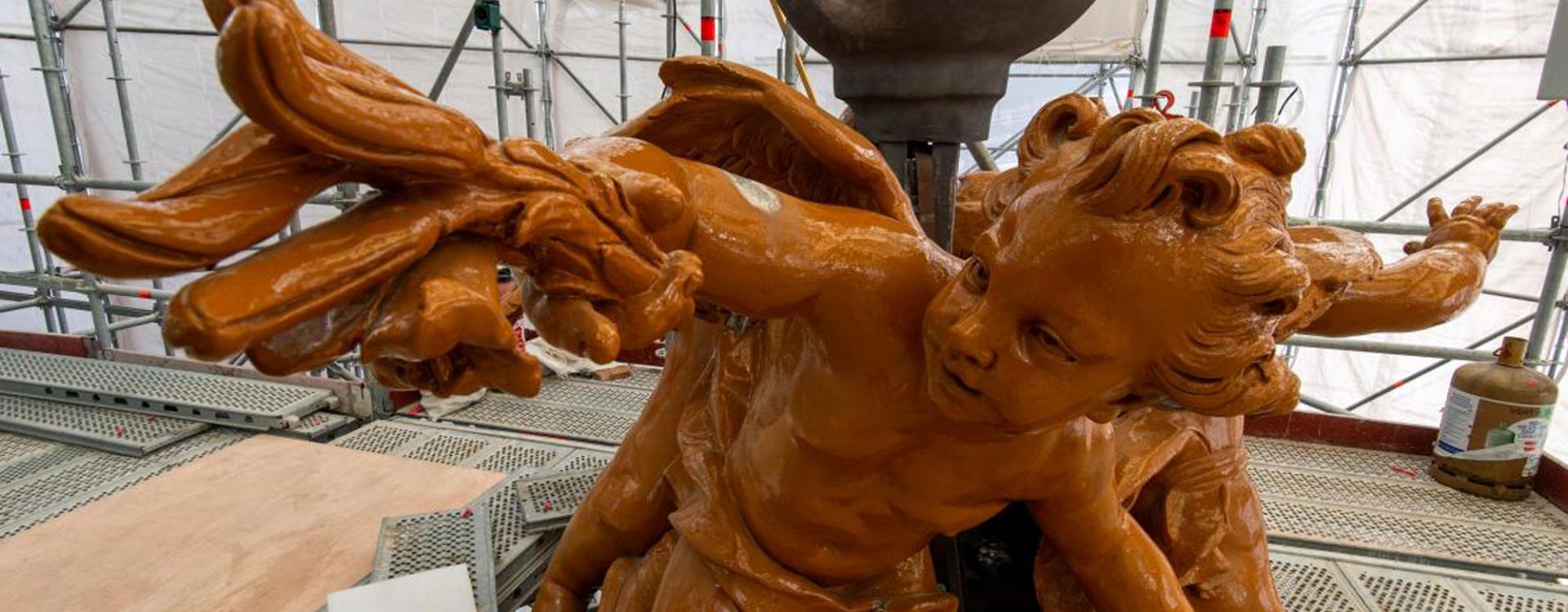A very special restoration job for very special frames
Thanks to the peristyle running round the building at two levels, the Royal Chapel is pierced by very big, regular windows that let in a large amount of light. Even more unusual and lavish for the period, these high windows were fitted with panels of clear glass, the stained variety only being used around the edges. The pieces are held in place by a system of strikingly elegant thin, metal frames.
In situ restoration, hemmed in at the top of scaffolding
From the start of the survey and throughout the work, all those who have come into contact with this unique framework have been struck by its level of detail and technical sophistication. Made like a wooden frame, very different to that normally used for stained glass, the pieces have been assembled using a particularly clever system of finely wrought fixings with false rivets and closures.
Light flooding through the glass
The restoration of these frameworks took the Saint-Jacques workshops nearly three years. The majority of the work was carried out in situ in order to avoid dismantling too many of the parts, deformed over time and hidden under successive layers of paint. Nevertheless, some of them had to be moved, a real tour de force for the metalworkers whose movements were, moreover, limited by the narrow space allocated to them behind tarpaulins, obligatory because of the lead and asbestos.
Forty-six windows, of which the biggest are eight metres high, were restored, one by one, by the Saint-Jacques workshops, i.e. more than one kilometre of brackets. A giant task also characterised by the uniformity of the pieces to be restored. The craftsmen’s stamina was severely tested by this implacable framework, marked at each intersection by a thick. They have nevertheless managed to deal with the magnificent metalwork, which will soon be highlighted by fresh gilding.






















